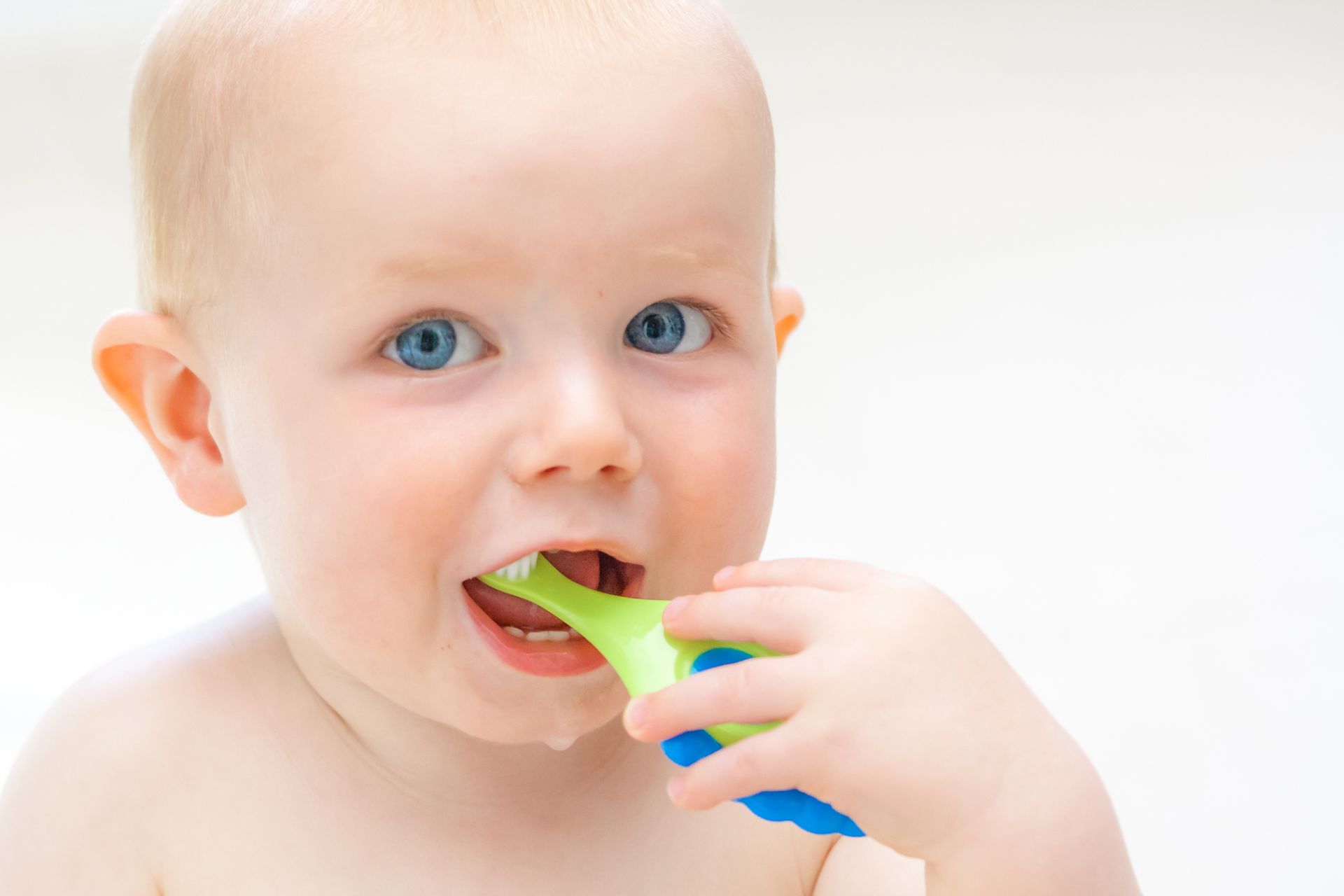
Dental Services
Let’s keep your child’s smile bright and healthy!

Did you know that even babies can develop tooth decay and cavities?
Yes, it's surprising but true!
Babies can develop tooth decay due to various reasons:
- Maternal and caregiver influence: If the child's primary caregiver had tooth decay or lacks regular dental care, they might pass cavity-causing germs to the baby.
- Calcium and mineral loss: White spots on a child's teeth indicate calcium and mineral loss, weakening the tooth.
- Visible signs of decay: Tan, brown, or black spots, or visible pits on teeth, are signs of decay.
Why should we care about baby teeth if they will fall out eventually?
We should care because cavities can be painful for babies and fixing them often involves anesthesia, which isn't without risks. Moreover, cavities in baby teeth can affect the health of permanent teeth by altering the mouth's germ balance.
How does fluoride help strengthen teeth?
Fluoride, a natural mineral found in most tap water, fights cavities by hardening enamel and inhibiting acid production by mouth bacteria. If your water lacks fluoride, consult your doctor about fluoride supplements.
How do I know if my water contains fluoride?
You can check whether your town water has fluoride by visiting this link: Community Water Fluoridation Status.
When should we start brushing a baby's teeth?

Once your baby's first tooth appears, start using fluoride toothpaste. Use a rice-sized amount until age 3, then a pea-sized amount. Supervise brushing until around 10 years old.
TIPS:
Teaching toothbrushing to toddlers may feel like a wrestling match! Try to make it fun! Use two toothbrushes and have your child try to brush yours to practice.
What else can I do to keep my child’s teeth strong?
Ensure the last thing touching your child's teeth at night is a toothbrush. Avoid putting them to bed with bottles filled with milk or juice. Limit intake of sugary foods like juice and chewy sweets and ensure thorough brushing afterward. One cup of 100% juice contains about 7 teaspoons of sugar!
What will my pediatrician do to help strengthen my child’s teeth?
Once your child has teeth, your pediatrician will start doing oral health checkups. Around age one, fluoride treatments will be offered. Fluoride varnish provides extra protection against tooth decay when used in addition to brushing.
What do we need to do after the fluoride treatment?
After the application of fluoride varnish, avoid eating or drinking for 30 minutes and avoid crunchy or chewy foods for 2 hours. Wait at least 4-6 hours before brushing or flossing. The varnish may cause a temporary sticky feeling and white debris on teeth.
What's one surprising way to take care of my baby's teeth?
One surprising way is by taking care of your own teeth! If you have dental decay, you can pass cavity-causing bacteria to your baby. Keeping your teeth healthy helps protect your little one's smile!
How do I find a dentist for my child?
Oral health starts early, so finding a reliable dental provider is crucial. You can use the American Academy of Pediatric Dentists’ “Find-a-Dentist” tool to find your child’s “dental home” online: Find a Pediatric Dentist.
Phone (508) 880-7858
Fax (508) 822-5972